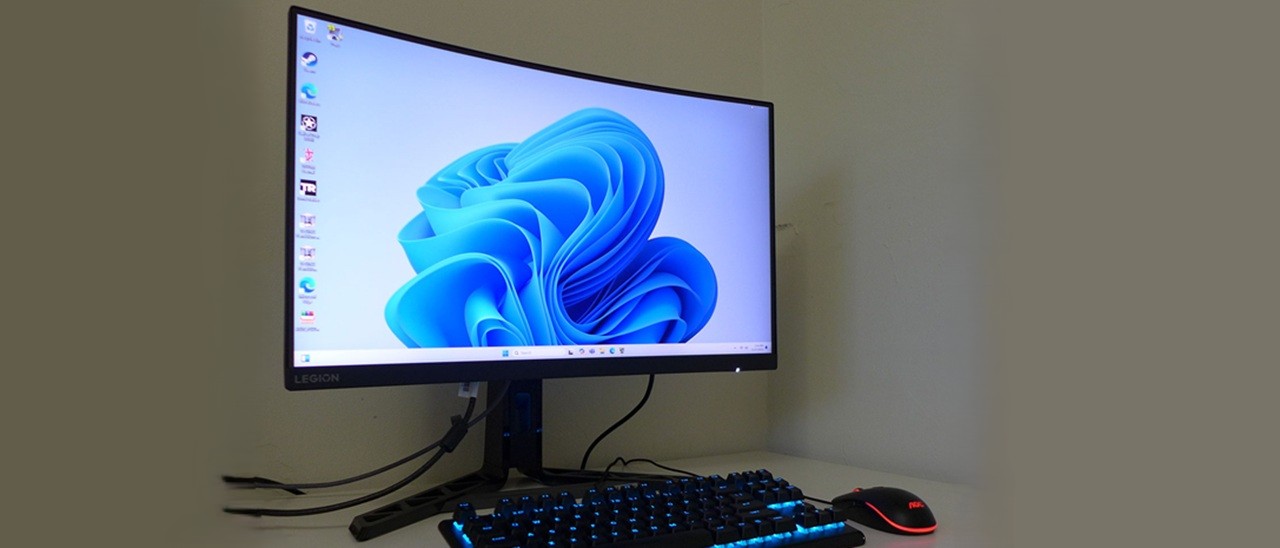Why you can trust Tom's Hardware
I’ve rounded up a group of speedy FHD displays to compare the R27fc-30’s performance. They are Lenovo’s R25f-30, BenQ’s XL2566+, Gigabyte’s GS27FA and GS27FC and AOC’s 27G15. Refresh rates range from 180 to 400 Hz.
Pixel Response and Input Lag
Click here to read up on our pixel response and input lag testing procedures.
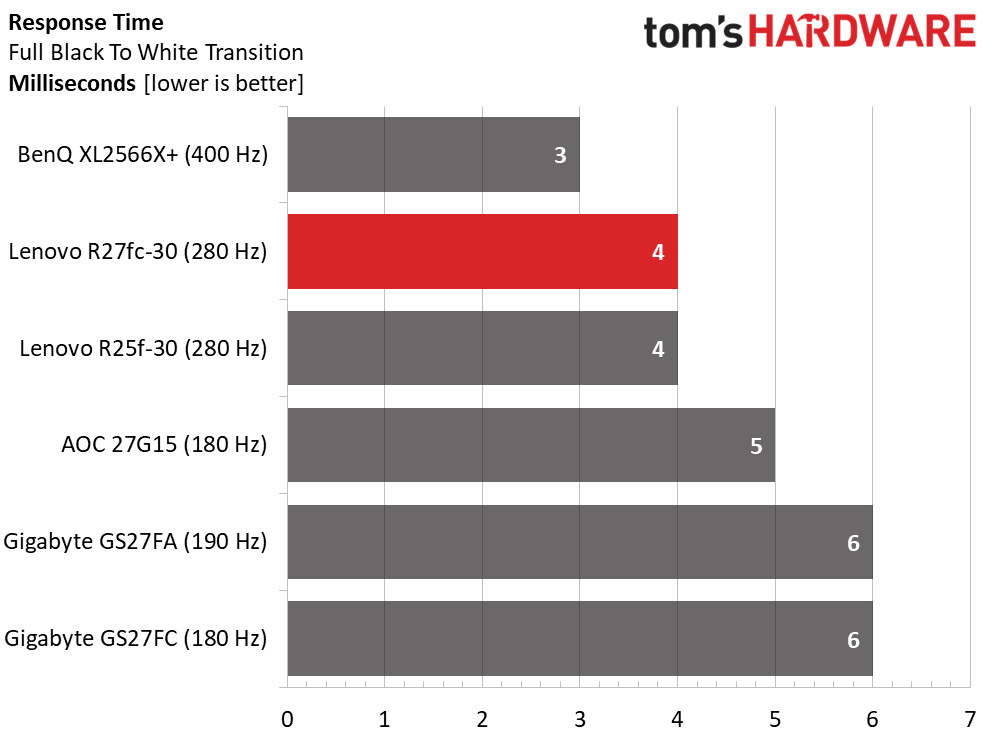
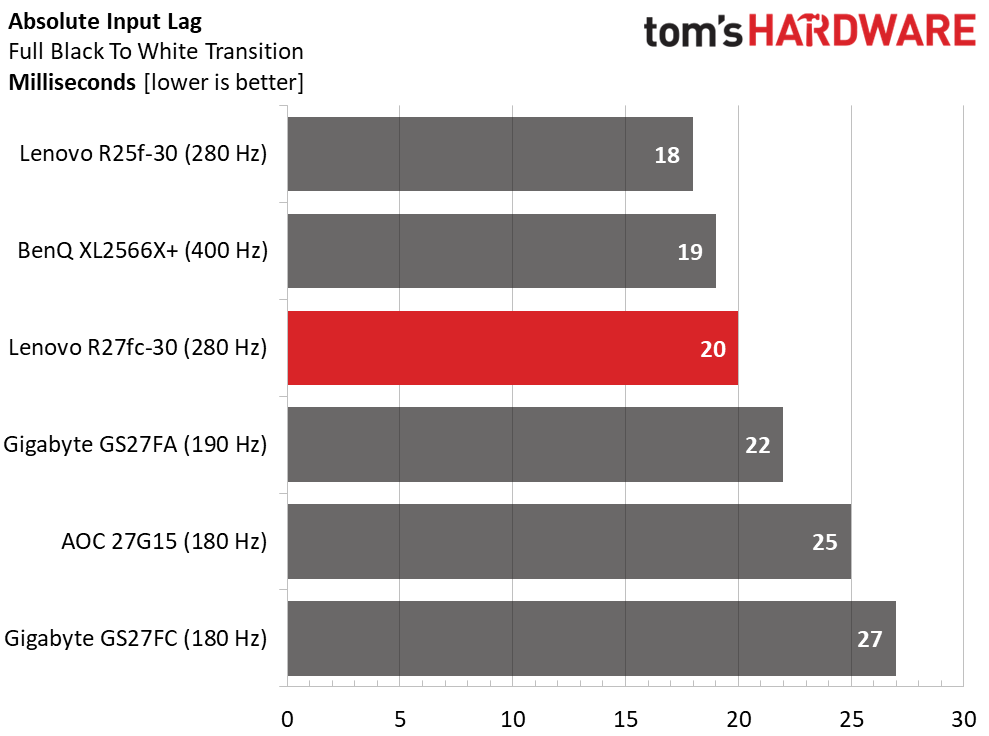
Response and lag numbers don’t always go hand-in-hand with refresh rates. In this group, the BenQ and Lenovos sit atop the response chart at three and four milliseconds respectively. But the Gigabyte GS27FA’s 190 Hz doesn’t give it an advantage. 280 Hz means that you’ll see almost no motion blur even without overdrive. The R27fc-30 has a very good one, so it has very smooth operation at both 240 and 280 Hz.
It also excels in the lag test, posting 20ms of total delay. That’s only 1ms slower than the 400 Hz BenQ, which is certainly impressive. However, the 25-inch Lenovo R25f-30 is the most impressive, at 18ms. Is it worth giving up 2ms for a larger screen? For all but the most skilled gamers, I’d say yes. The R27fc-30 is one of the quicker monitors I’ve seen for less than $200.
Test Takeaway: The R27fc-30’s gaming performance is well above the norm for inexpensive screens. 20ms of total lag is among the best I’ve recorded overall, without reference to price, refresh rate or screen technology. If you’re looking for a competition-ready display for less than $200, the R27fc-30 is a serious contender.
Viewing Angles
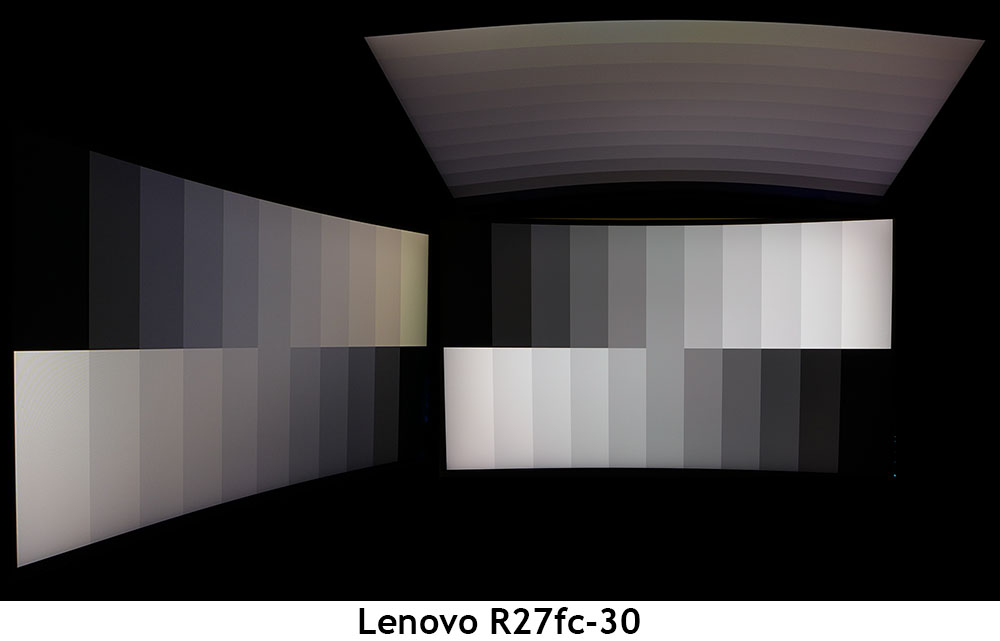
The R27fc-30 delivers viewing angles typical of the VA screens I’ve tested. At 45 degrees to the sides, the image has a green/red tone with slightly reduced gamma and a 30% reduction in brightness. It’s just as well that few users will be sharing a 27-inch screen. The top view is very dim with the same color shift and 50% less light output.
Screen Uniformity
To learn how we measure screen uniformity, click here.
Get Tom's Hardware's best news and in-depth reviews, straight to your inbox.
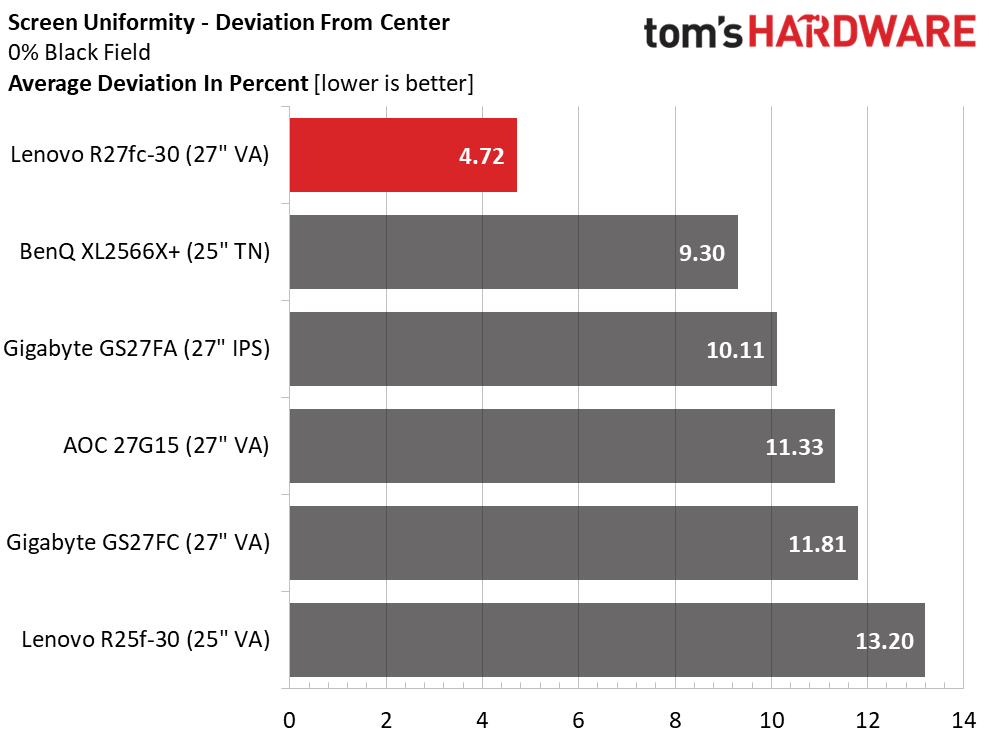
My R27fc-30 sample showed exceptional screen uniformity with just a 4.72% deviation from the center zone. That is well below the visible threshold. It means you can’t see any glow or bleed, just even tones from edge to edge. I saw no variation in other brightness levels or in any color patterns either.
Current page: Response, Input Lag, Viewing Angles and Uniformity
Prev Page Features and Specifications Next Page Brightness and Contrast
Christian Eberle is a Contributing Editor for Tom's Hardware US. He's a veteran reviewer of A/V equipment, specializing in monitors. Christian began his obsession with tech when he built his first PC in 1991, a 286 running DOS 3.0 at a blazing 12MHz. In 2006, he undertook training from the Imaging Science Foundation in video calibration and testing and thus started a passion for precise imaging that persists to this day. He is also a professional musician with a degree from the New England Conservatory as a classical bassoonist which he used to good effect as a performer with the West Point Army Band from 1987 to 2013. He enjoys watching movies and listening to high-end audio in his custom-built home theater and can be seen riding trails near his home on a race-ready ICE VTX recumbent trike. Christian enjoys the endless summer in Florida where he lives with his wife and Chihuahua and plays with orchestras around the state.
